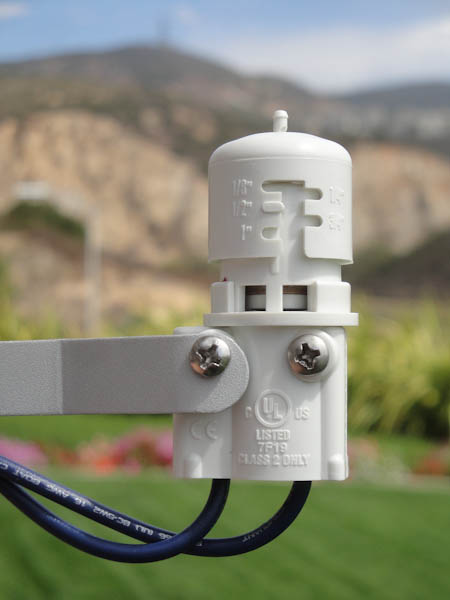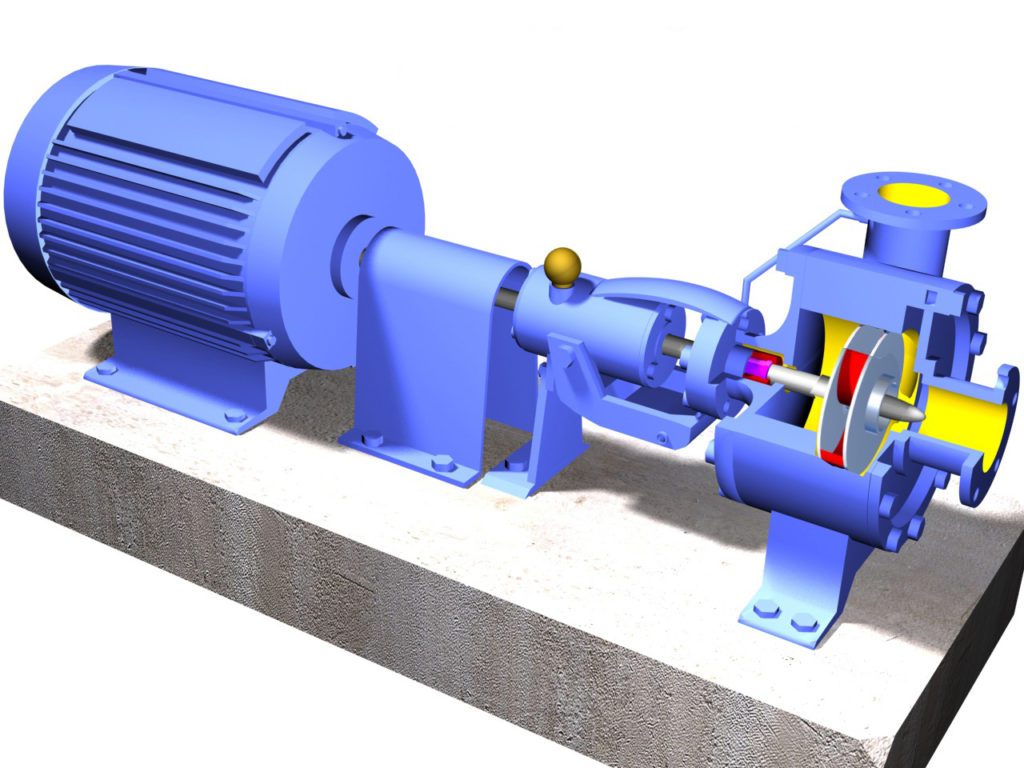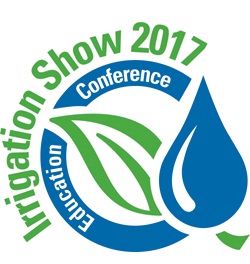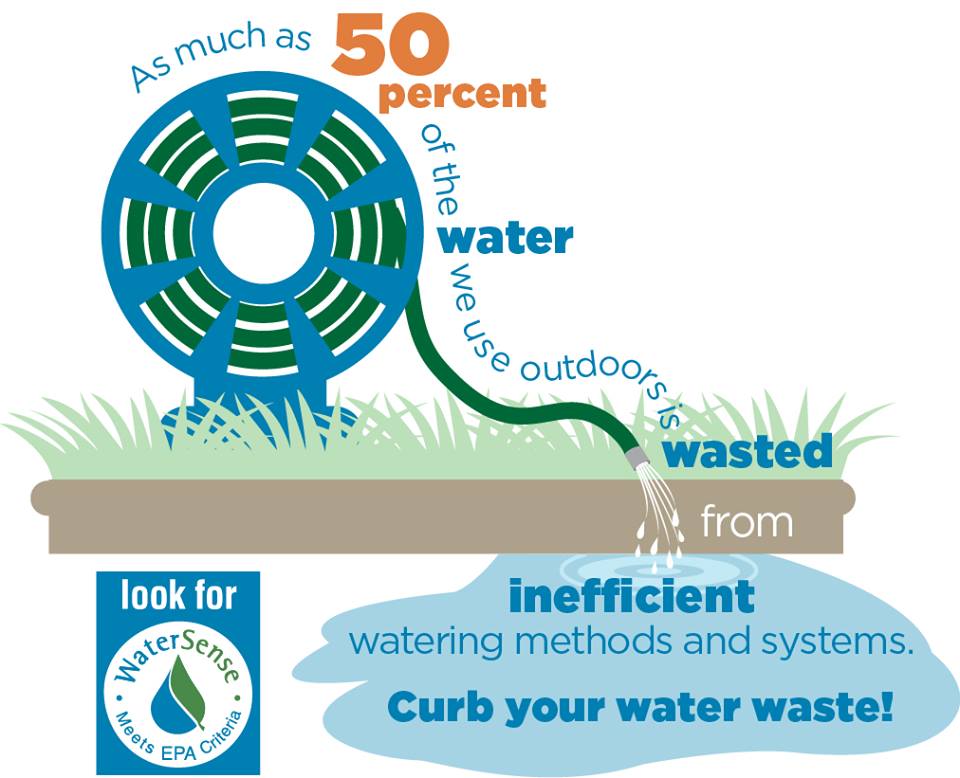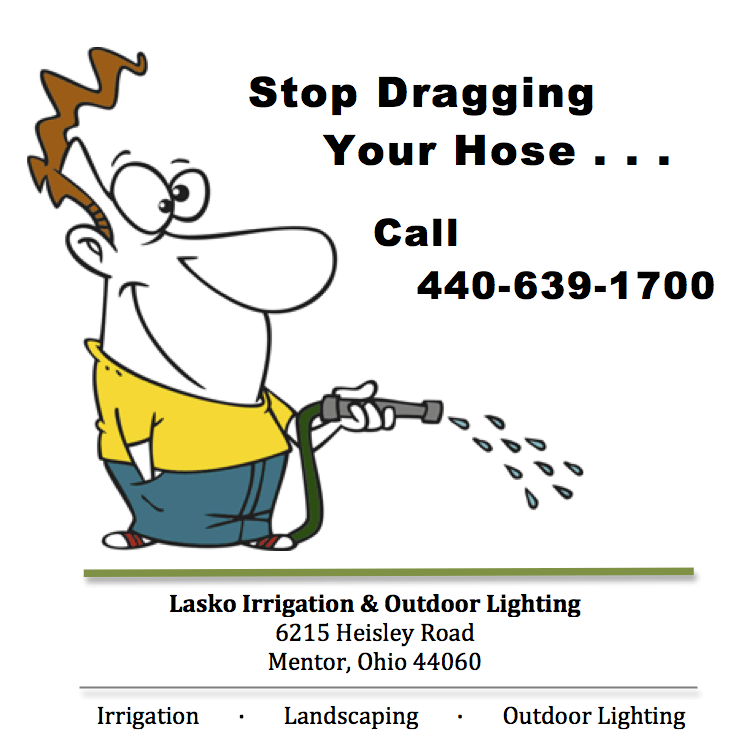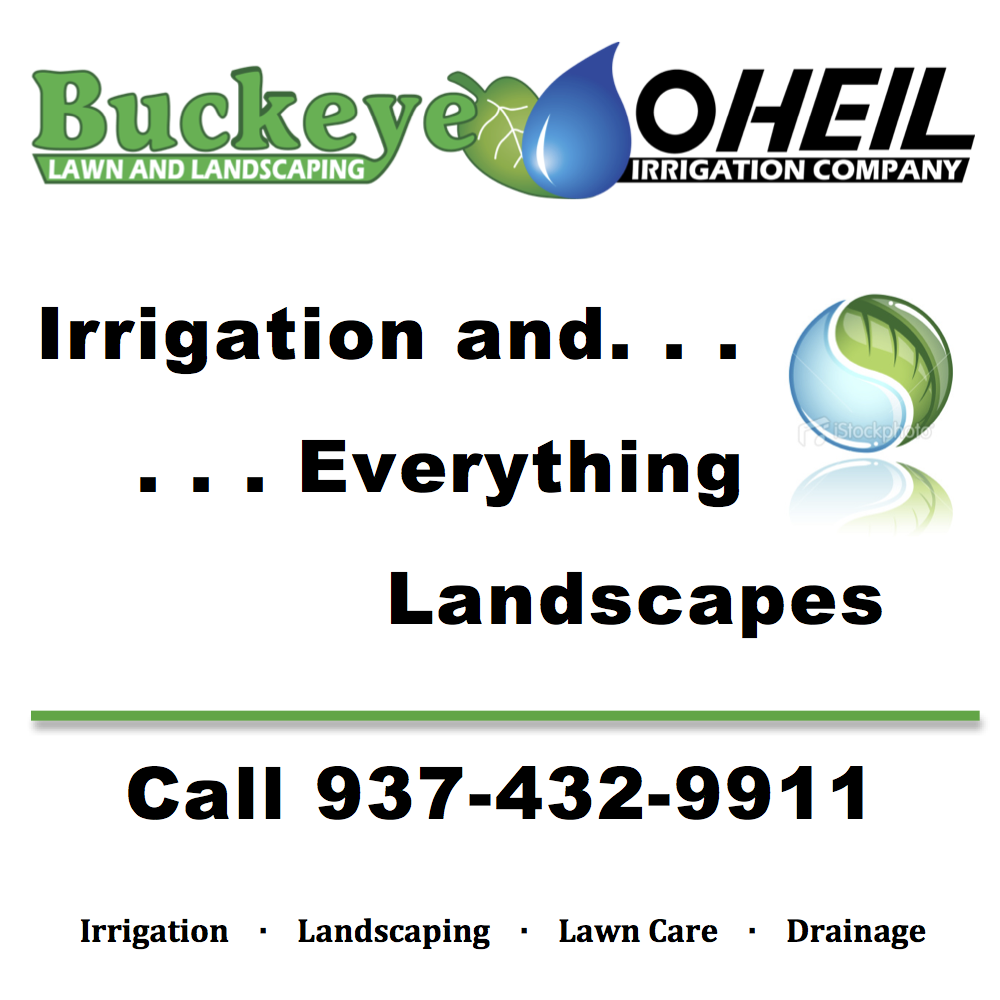
by Tom Barrett | Mar 1, 2018
Sprinkler System Start-Up Tips
The warmth of spring means it’s time to prepare your landscape sprinkler system for another season of watering.
Hiring a qualified irrigation professional to perform tasks like spring start-up is always best, but experienced do-it-yourselfers, can follow these tips:
Timing Is Everything
First of all, you need to make sure spring has indeed sprung. The soil beneath your landscaping is always the last to thaw, so use a shovel to confirm that the ground is frost-free 12 inches down. Starting your sprinkler system while the ground is still frozen can result in damaged pipes. Is the ground still hard as a rock? Wait another week and try again.
Then check the settings on your sprinkler to make sure they’re appropriate for your landscape’s watering needs. Replace the back-up battery in the timer/controller, if necessary.
Go with the Flow
Before turning on any water to the system, double-check that all manual drain valves are returned to the “closed” position. When you first turn the water back on, be sure to open the system main water valve SLOWLY to allow pipes to fill with water gradually. Opening the water valve to quickly can result in a high-pressure surge called “water hammer,” which often causes burst pipes and damaged valves.
Check for rocks, dirt, sand and other types of debris that could block your sprinkler heads. And keep an eye out for spray heads that may have become buried with debris over the course of the winter.
Nozzles and sprinkler heads are designed to withstand normal wear and tear of irrigation, but not errant lawn mowers or snowplows. So be sure to replace all cracked, chipped or worn components. A broken or leaky sprinkler can wreak havoc on both your landscaping and water bills.
Valves and Pressure Gauges
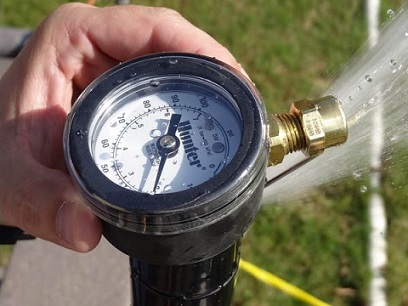 The valves in your irrigation system are the system’s heart. It’s important to visually inspect each valve to determine that it’s operating properly. You can do this by manually activating all zones from the controller.
The valves in your irrigation system are the system’s heart. It’s important to visually inspect each valve to determine that it’s operating properly. You can do this by manually activating all zones from the controller.
Also, make sure the water pressure is at a safe operating range. Too much pressure will result in cracked pipes, busted valves, sprinkler head leaks and inefficient watering.
A water pressure gauge is often helpful. These devices typically connect to a hose faucet and give you a good idea of the pressure in your irrigation system. (Suggested operating range is typically 40 -65 PSI.) Hint: If water is “misting” out of your sprinkler heads, your pressure is too high and should be reduced.
Think It’ll Rain?
Most modern irrigation systems are equipped with a rain sensor. This device should also be checked prior to activating your system in the spring. Here’s how:
 First, consult the systems operator’s manual to determine the proper setting for testing your unit. (For example, some systems must be set to the “manual all stations” setting to test them. If that is the case with your system, you cannot test it on the “manual single station” setting.)
First, consult the systems operator’s manual to determine the proper setting for testing your unit. (For example, some systems must be set to the “manual all stations” setting to test them. If that is the case with your system, you cannot test it on the “manual single station” setting.)- After properly setting the irrigation system control, check the system to make sure it came on. (You may need a helper to assist you.)
- Once you have confirmed that the sprinkler is running, depress the plunger located on the top of the rain sensor. The sprinkler system should stop irrigating within a few seconds.
- If watering does not stop when you depress the plunger, you’ll have to troubleshoot the system. Confirm that all wiring connections on the sensor and on the sprinkler control unit are tight. Check to make certain that the jumper tab, also called a jumper wire, was removed when the rain sensor was hooked up to the control panel.
Also be aware that the disk inside a rain sensor can become clogged with dirt or insects, which can keep it from functioning properly. Consult your operator’s manual for the correct procedure to clean the disk.
A Word about Backflow
 A backflow device has been installed on your irrigation system in accordance with Ohio state law. This device prevents a cross-connection from occurring between the drinkable and undrinkable water in your home.
A backflow device has been installed on your irrigation system in accordance with Ohio state law. This device prevents a cross-connection from occurring between the drinkable and undrinkable water in your home.
Spring is a good time to have your backflow preventer tested, as annual testing of the device is required in the state of Ohio. This testing can only be done by individuals who have been certified by an approved testing school. Backflow testers must have at least 24 hours of training in the classroom and hands-on test lab.
To locate a certified backflow tester in your area, Click Here.
Leave It to the Pros
Again, it’s best to leave all spring start-up tasks to the professionals. A qualified service technician will go through your irrigation system zone by zone and check every irrigation spray pattern for optimum turf and plant coverage, as well as check each sprinkler head and valve for any leaks. He can also test and clean your rain or weather sensor to ensure top performance.
Lastly, the technician will program the controller for the proper irrigation schedule, based on your landscape and weather conditions, as well as neighborhood watering restrictions.
Sources:
Hunter Industries
Rainbird
SF Gate

by Tom Barrett | Dec 13, 2017
MGIX Offers Education,
Expanded Trade Show
MGIX 2018 is scheduled for three full days, January 15 through 17, 2018, at the Greater Columbus Convention Center. This annual event combines industry-leading education with an expanded trade show. It’s a truly innovative green industry experience that you won’t want to miss!
Trade Show
 More than 300 exhibitors will be offering everything from nursery stock and hardscaping products to pest control and landscaping equipment. This year’s show is expected to attract thousands of attendees.
More than 300 exhibitors will be offering everything from nursery stock and hardscaping products to pest control and landscaping equipment. This year’s show is expected to attract thousands of attendees.
New this year will be the Feature Stage! Located in the Exhibit Hall, the stage will spotlight entertainment, education and product presentations. The expanded trade show will also offer the Garden Lounge and New Product Showcase.
Family Time
Also new this year will be Family Programs. Many MGIX attendee and exhibitors own or work for family businesses. So MGIX 2018 offers activities and education sessions to address family business issues and provide family-friendly entertainment for all ages.
Back by Popular Demand
Back again for 2018 is the ever-popular Climbers Corners. This live-stage event features expert educators demonstrating a variety of arboricultural techniques important to tree care professionals, landscape crews, managers and landscape designers.
Education
Educational sessions of particular interest to landscape and irrigation professionals will include:

- Rain Water Harvesting & Reuse for Irrigation
- Efficient Irrigation Design & Installation
- Why Plants Do the Things They Do
- Preparing your business for disasters. Know what to do next.
- Landscaping for Water Quality
- Legislative Update
To Learn More…
For more information, including the education schedule and special events, Click Here.
To register for MGIX 2018, Click Here.
To reserve a booth, Click Here.
Sources:
OGIA
Ohio Nursery and Landscape Association

by Tom Barrett | Nov 8, 2017
November Means It’s Time to Winterize
(Note: Portions of this article originally appeared in SportsTurf Magazine)
The dreary days of November remind us that it’s time to start thinking about preparing your irrigation systems for winter.
Here are some tips for winterizing an irrigation system:
Preventing Pipe Damage
Of course, water expands when it freezes. Since automatic irrigation systems are usually buried only about twelve inches below the surface of the soil, any water left in the system over the winter (even a mild winter) will certainly freeze. This causes damage to pipes, fittings, valves, and sprinklers. And this damage can be expensive and time-consuming to repair next spring. So, preventing winter damage by properly winterizing the irrigation system is important.
The following video clip demonstrates the consequences of failing to do so:
The most common method of winterization is to use compressed air to force water out of the irrigation system. However, some irrigation systems are equipped with automatic or manual drain valves. These do not require compressed air to winterize. Check with your installing contractor to determine if your irrigation system has automatic or manual drain valves. If you’re not sure, then go ahead and use compressed air. Using compressed air on an irrigation system equipped with automatic or manual drain valves will not harm the system components, and will ensure the irrigation system is properly winterized.
Selecting an Air Compressor
Air compressors are available in various sizes. A properly sized air compressor is critical in order do effectively and efficiently blow air into the irrigation system, forcing any water out. The most common portable air compressor (representing about 80% of the portable air compressors in use today) is the 185 portable air compressor. This machine is rated at 185 cfm at 100 psi at full load.
This type of compressor can be found through a contractors’ equipment rental shop, and it’s more than adequate for most residential and commercial irrigation systems. Smaller 5 h.p. electric air compressors, even if they’re 100 psi, do not deliver enough volume of air to adequately winterize an irrigation system.

How-To: Compressed Air Winterization
When using a compressor to winterize your system, follow these steps:
- Shut off the water to the system at the point of connection. The system shut-off valve may be either a ball valve or gate valve. It should be located in the basement or directly behind the water meter.
- Next, open a zone valve to relieve the system pressure.
- Attach the air hose from the air compressor to the blow-out point. The blow-out point is usually located directly behind the backflow device. The blow-out point may be a quick coupling valve, a hose bib, or a boiler drain.
A Note of Caution: The expanding air coming from the air compressor into the irrigation system will get hot and may melt the plastic pipe. Carefully check the temperature of the air hose connection at the blow-out point. Slow down or stop momentarily if it feels too hot! Cycling through each zone two or three times for short intervals will prevent too much heat buildup.
- Set the pressure regulator on the air compressor at 50 to 80 psi.
- On smaller residential systems, where the zones are typically about 10 gpm or less, open one electric remote control valve manually. Then cycle through all the other zones two to three minutes by manually opening each valve or by electrically operating each valve at the controller. Opening one valve manually will help to keep the air compressor from building up too much pressure, while assuring an adequate volume of air to thoroughly blow out all the water in the system. (On larger systems, it may not be necessary to open one valve manually.)
- Allow the air to flow through each zone until water and water vapor no longer appears from any sprinklers in the zone. Start with the zone with the highest elevation in the system or farthest from the point of connection. Blow out each zone successively toward the point of connection. It’s a good idea to cycle through each zone two times, to ensure no water is remaining.
How-To: Automatic Drain System Winterization
Some systems are equipped with automatic drains that open when the system pressure falls below 10 psi. For these systems, it is usually only necessary to turn off the water.
- Open a drain valve after the point of connection.
- Winterize the backflow device and controller (See “Backflow Preventer Winterization” below.)
Some irrigation systems incorporate automatic drain valves on the laterals with manual drain valves on the main line. The manual drain valves will be located in small valve boxes at the end and at low points on the main line. Open the drain valves, and allow the water to drain out completely. Then close the drain valve.
How-To: Manual Drain System Winterization
If your system is equipped with manual drain valves:
- Locate the drain valve for each zone and the main line. The manual drain is usually located in a small valve box at the end of the zone and at every low point. Also, the main line will have a manual drain at the end of the line and at every low point.
- Open each drain valve, allowing all the water to drain out, and then close the manual drains.
- Winterize the backflow device and controller.
How-To: Winterize the Backflow Preventer
The backflow preventer is the plumbing device attached to the outside of your house. It is the source of water to the irrigation system, and it can freeze and burst in only a few hours of below-freezing temperatures. So winterizing your backflow preventer is critical.
 Here’s how:
Here’s how:
- Turn off the main shut-off valve to the system.
- Using an adjustable wrench, remove the outlet drain plug or spigot on the outside piping.
- Turn valves to a 45-degree angle (half-open/half-closed position).
- Cover/wrap the backflow valve and all copper pipe with a large towel or blanket.
- Place 2-3 gallon bucket underneath drain and open the drain valve. Generally, 1-2 gallons of water will empty into the bucket. Once all the water has drained out of the pipe, close the drain valve.
How-To: Winterize the Controller and Rain Sensor
 To winterize the irrigation controller, simply turn the controller to the off or “rain shutdown” position. (You can also disconnect the power and remove the battery, but this is not necessary.) Do not allow the controller to cycle through an irrigation schedule without water in the system.
To winterize the irrigation controller, simply turn the controller to the off or “rain shutdown” position. (You can also disconnect the power and remove the battery, but this is not necessary.) Do not allow the controller to cycle through an irrigation schedule without water in the system.
If your irrigation system is equipped with a rain sensor or a soil moisture sensor, it’s not usually necessary to cover or remove the sensor for the winter. Check with the manufacturer to make sure your rain sensor does not require any special instructions for winterization.
How-To: Winterize the Pump
If you have a submersible pump (i.e., located in a lake, stream or pond), the check valve at the pump must be removed to keep the discharge hose from freezing. The best way is to simply remove the pump and discharge hose from the water each winter, and reinstall in the spring.
If you have a centrifugal pump, follow these steps:

- Remove the drain valve (located at the base of the pump housing) and store it for the winter.
- Disconnect the power supply, to prevent the pump from being accidentally turned on without any water. (A pump running without water will quickly burn up.)
- If the pump is drawing water from a lake or stream, you must remove the intake hose or suction line completely from the water and store it for the winter.
- If a check valve is located on the discharge side of the pump, it too must be removed and stored for the winter.
Leave It to the Pros
As you can see, preparing an irrigation system for winter can be a complicated process. A knowledgeable professional is essential to minimize damage caused by freezing. An improperly winterized irrigation system can be an expensive proposition next spring.

by Tom Barrett | Oct 4, 2017
Irrigation Show 2017 Is Set for November 8-9,
Education Conference for November 6-10
Irrigation Show 2017 is the only national trade show designed specifically for irrigation professionals. It’s where the irrigation industry comes together to network, learn and promote irrigation.
Nearly 5,000 distributors, dealers, contractors, consultants and growers are expected to attend this year’s event. You’ll have the opportunity to:
- Check out innovative products, technologies and services.
- Explore new suppliers.
- Learn about the latest business trends and irrigation best practices.
- Network with current business partners and with industry leaders who share the Ohio Irrigation Association’s commitment to efficient irrigation.
Educational Opportunities
While enjoying sunny Orlando, be sure to attend some of the many irrigation seminars and classes that are offered. You’ll learn concepts and practical skills you can implement immediately.
Scheduled classes offer:
- Real-world applications and irrigation case studies.
- Current techniques, field-tested information and best practices.
- Instructors with industry expertise and proven teaching experience.

One-hour seminars will provide detailed coverage on a focused topic in landscape irrigation. Seminars are open to all attendees with a full registration. Participants will earn 1.00 CEU for each hour. This year’s topics will include:
- Irrigating Green Roofs
- Pressure Regulation to Improve Irrigation Efficiency
- Basis of Design
- Top 5 Employment Law Issues Facing Contractors
A Proven Winner
Attendance at last year’s Irrigation Show was up double digits. Exhibitor presence was strong, and new product introductions were plenty.
In fact, research of past shows has indicated a strong correlation between show attendance and future sales. Specifically, within 12 months of the show:
- 77% of the attendees purchased a product or service as a result of contacts made at the show.
- 90% of the attendees contacted exhibitors met at the show.
- 90% of the attendees visited exhibitor websites based on information from the show.
Check out this promotional video from last year’s Irrigation Show:
Sources:
Irrigation Association
Green Industry Pros

by Tom Barrett | Sep 13, 2017
EPA’s WaterSense Sparks Transformation
Over the past decade, EPA’s WaterSense program has sparked a market transformation. All across North America irrigation products now save water, energy, and money.
The program was recently threatened by Trump administration budget cuts. But that threat is on hold for now. Let’s take a look at some of the program’s accomplishments in the last 10 years…
Labels and Certification
Since 2007, more than 21,000 product models of plumbing fixtures and irrigation controllers have earned the WaterSense label for efficiency and performance. More than 5,000 new models earned the label in 2016 alone. Nearly 68 million individual labeled products have been shipped to date.

Beginning in 2006, WaterSense certification programs have focused on water efficiency. Such as techniques and technologies for certified irrigation system designers, auditors, and installation and maintenance professionals. Since then, thousands of irrigation specialists have been certified and gained an edge in the competitive marketplace.
The Three “P’s” — Products, Practices, People
In an effort to reduce the waste of outdoor water, the EPA program has promoted the three “P’s”— products, practices, and people. This includes:
- Designing water-smart landscapes that are well-suited for the local climate
- Installing WaterSense-labeled irrigation controllers, and
- Hiring WaterSense-certified irrigation professionals.
Their efforts have paid off. For instance, in 2016, the number of labeled irrigation controllers increased by an impressive 63% over the previous year. These new, web-based models allow users to adjust their irrigation systems via an app on their smartphone.
What’s Next?
For now, the WaterSense program is focused on product labeling for pressure-regulating sprinkler bodies. The idea is that large amounts of water can be wasted whenever spray sprinklers operate under above-normal pressure. And significant water savings can be realized by regulating this pressure. To this end, the program recently released a draft specification for these new pressure-regulating sprinklers.
Let’s Keep It Going
The Alliance for Water Efficiency (AWE) is working to ensure that the WaterSense program can continue unabated. But they need help. Which is why they’re seeking signers of letters supporting their proposed legislation to keep it going.
Sources:
Environmental Protection Agency
Alliance for Water Efficiency
Interior Appropriations Subcommittee

 The valves in your irrigation system are the system’s heart. It’s important to visually inspect each valve to determine that it’s operating properly. You can do this by manually activating all zones from the controller.
The valves in your irrigation system are the system’s heart. It’s important to visually inspect each valve to determine that it’s operating properly. You can do this by manually activating all zones from the controller. First, consult the systems operator’s manual to determine the proper setting for testing your unit. (For example, some systems must be set to the “manual all stations” setting to test them. If that is the case with your system, you cannot test it on the “manual single station” setting.)
First, consult the systems operator’s manual to determine the proper setting for testing your unit. (For example, some systems must be set to the “manual all stations” setting to test them. If that is the case with your system, you cannot test it on the “manual single station” setting.) A backflow device has been installed on your irrigation system in accordance with Ohio state law. This device prevents a cross-connection from occurring between the drinkable and undrinkable water in your home.
A backflow device has been installed on your irrigation system in accordance with Ohio state law. This device prevents a cross-connection from occurring between the drinkable and undrinkable water in your home.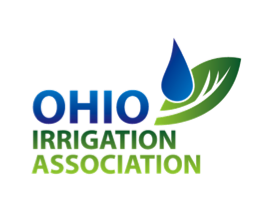
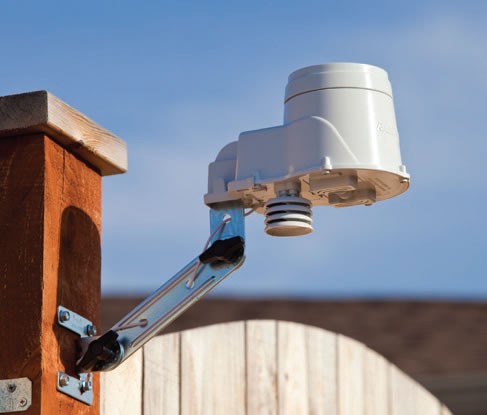 First, consult the systems operator’s manual to determine the proper setting for testing your unit. (For example, some systems must be set to the “manual all stations” setting to test them. If that is the case with your system, you cannot test it on the “manual single station” setting.)
First, consult the systems operator’s manual to determine the proper setting for testing your unit. (For example, some systems must be set to the “manual all stations” setting to test them. If that is the case with your system, you cannot test it on the “manual single station” setting.)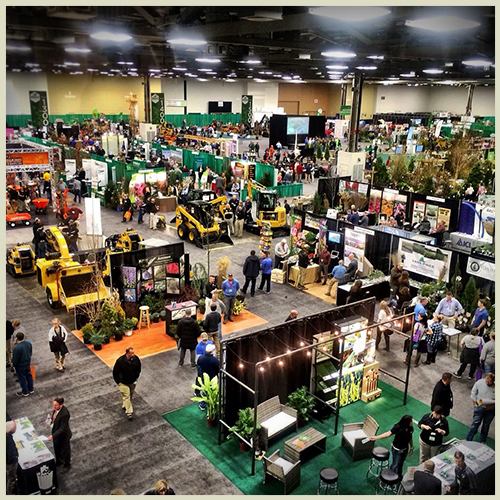




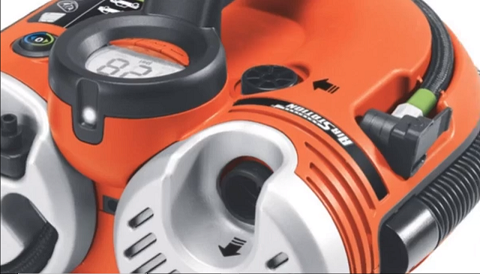
 Here’s how:
Here’s how: